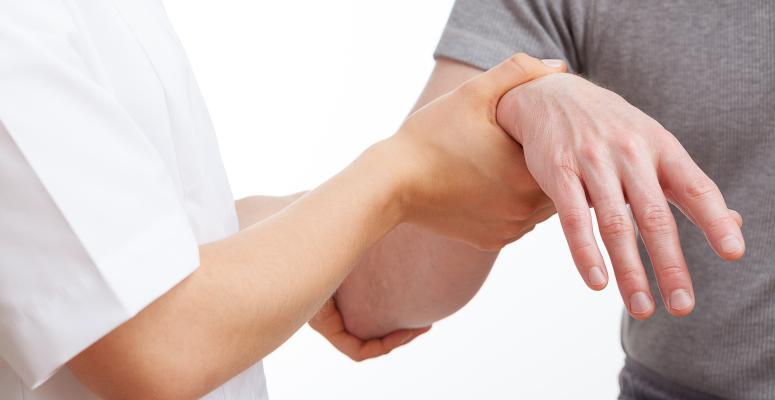
Rheumatoid arthritis is a disease that involves chronic inflammation in the joints. The immune system mistakenly attacks the tissue lining the joints, which eventually leads to joint damage and limited mobility. As the disease progresses, pain and discomfort can become increasingly prevalent. Researchers estimate that nearly 1.3 million people have rheumatoid arthritis.
What do each of the 4 stages of rheumatoid arthritis look like?
The four stages of rheumatoid arthritis correspond to the severity of the disease’s progression. The four stages of RA, in order, include:
- Stage 1 — The first stage of rheumatoid arthritis is also known as early-stage RA or synovitis. During this stage, the joints become inflamed. At this point, the immune system has just started to target tissue around the joints. The symptoms of the first stage most often include swelling, stiffness and pain. The symptoms are usually considered mild and may cause a little discomfort while using the joints to perform daily activities. Some people may not experience any noticeable symptoms. Someone with synovitis is likely to experience symptoms in their hands, ankles and knees. It may be harder for the individual to detect on their own. But if a professional diagnoses and treats a person at this stage of RA, their chances of remission are much higher.
- Stage 2 — The second stage of RA is also referred to as moderate-stage RA or pannus. During this stage, the immune system’s attacks have led to further inflammation and are starting to cause issues within the joint. The cartilage and bones in the joint may become damaged and thin, leading to moderate levels of pain and stiffness. It may become difficult to use the affected joint without experiencing pain or discomfort. This is because when the cartilage that cushions the joint becomes too thin, the joint becomes harder to use. If the cartilage continues to deteriorate, the bones may start to rub against each other.
- Stage 3 —The third stage is called severe RA or fibrous ankylosis. Most medical professionals consider the third stage of rheumatoid arthritis as the stage where the symptoms become severe. The immune system has worn down most of the cartilage in the joints, and the bones have started rubbing against each other. As a result, the bones and neighboring fibrous tissue begin to join together. The blending of two ends of the bone and fibrous tissue may significantly limit mobility in the joint. The pain, swelling and stiffness are also typically severe at this point. The affected joints are noticeably malformed during this point in the process.
- Stage 4 — The fourth and last stage of RA is called bony ankylosis. The swelling and pain subsides at this stage, but mobility is significantly impaired. Using the affected joint during movement is nearly impossible. The fourth stage of rheumatoid arthritis can make performing daily activities very difficult.
Can the stages of rheumatoid arthritis be slowed or stopped?
If a professional diagnoses someone with rheumatoid arthritis during the first stage of progression, there is the possibility of remission. Remission is usually only possible after treatment has been carried out within the first 12 weeks after diagnosis at this stage.
The length of time that rheumatoid arthritis progresses can vary depending on the person’s age, physical health, genetics, stage of RA and inflammation levels. Most people experience flare-ups where the symptoms worsen and periods where the symptoms are less intense. It can be difficult to slow down or stop the symptoms, but treatment can help a person manage their pain and mobility issues.
Physical therapy is a helpful treatment option for someone experiencing rheumatoid arthritis. This is because PT can improve muscle strength around the joints, improve range of motion and reduce pain. Therapeutic exercise and stretching movements can be helpful in achieving these goals.
Alliance PTP can connect you with the physical therapy practice you need for rheumatoid arthritis treatment
Ready to try in-person physical therapy for your injury or condition? You’ll find plenty of options to choose from among the Alliance Physical Therapy Partners practices nationwide.
Our team can quickly put you in touch with one of our partner clinics near you, and their friendly and knowledgeable local staff can help you find care for your rheumatoid arthritis symptoms.
Still have questions about what we and our partners can do for your symptoms? We’re ready to answer them and help you find the physical therapy you need.
Get Help at a Location Near You
